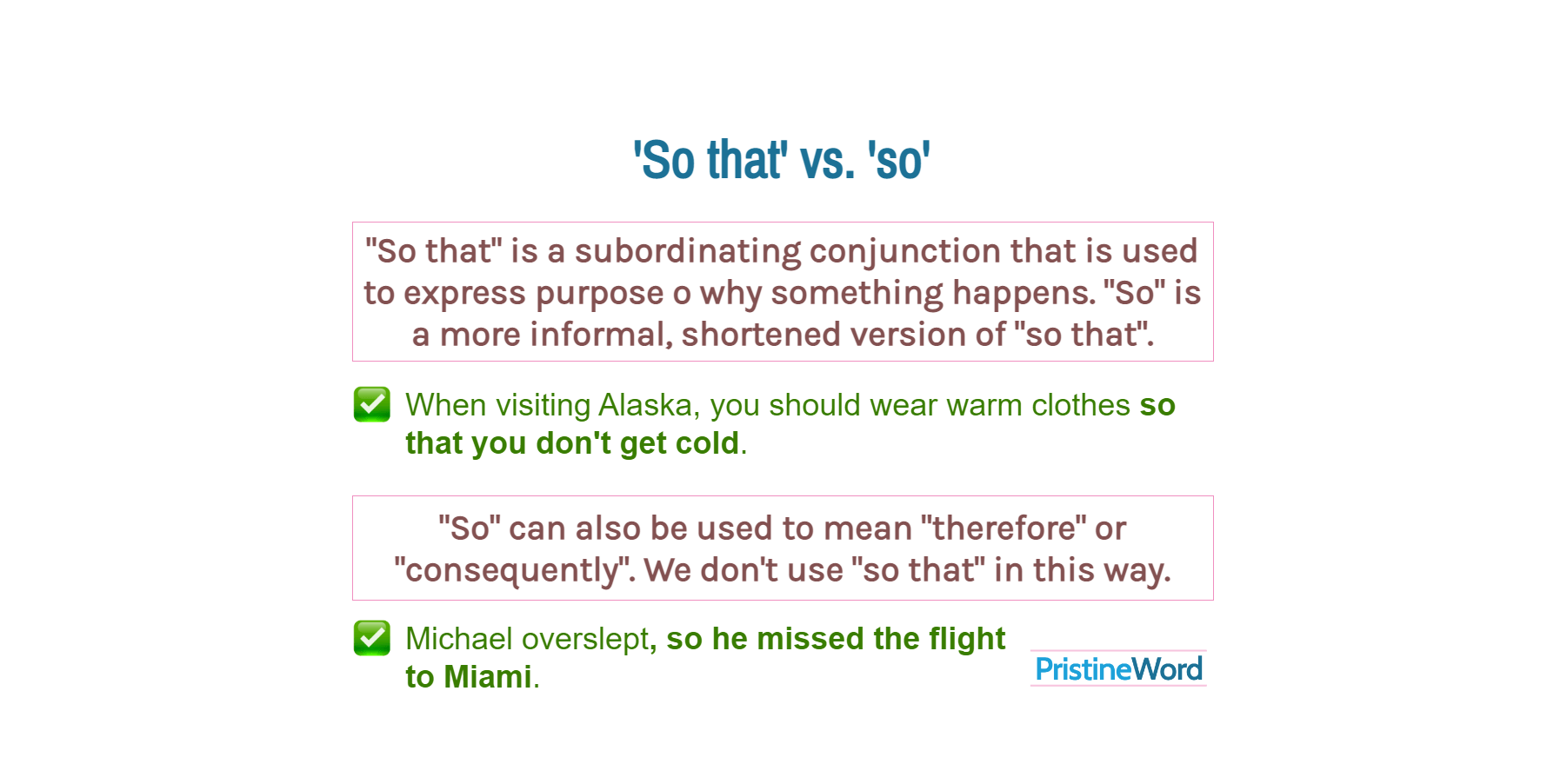"So that" is a subordinating conjunction that is used to express purpose o why something happens. "So" is a more informal, shortened version of "so that".
"So that" is a subordinating conjunction that is used to express purpose or why something happens. "So" is a more informal, shortened version of "so that".
When visiting Alaska, you should wear warm clothes so that you don't get cold.
When visiting Alaska, you should wear warm clothes so you don't get cold.
Be aware, however, that "so" can also be used to mean "therefore" or "consequently". We don't use "so that" in this way.
Sarah was in Detroit, so she couldn't have committed the crime at that place and time.
Sarah was in Detroit, so that she couldn't have committed the crime at that place and time.
A way to determine whether "so" can be replaced by "so that" is to mentally replace "so" by "therefore". If it works, "so" cannot be replaced by "so that".
When using "so" to mean "therefore", add a comma before "so" in mid-sentence. By contrast, omit the comma before "so that" or "so" if both are interchangeable.
Michael overslept, so he missed the flight to Miami. ("So" can be replaced by "therefore"—comma)
Jessica plans her meals in advance so she can take control of her weight. ("So" can be replaced by "so that"—no comma)
In other words, "so" can have two different meanings.
- "So that" (subordinating conjunction)
- "Therefore" or "consequently" (coordinating conjunction)
You can also start a sentence by "so that" or "so" to express purpose. When meaning "therefore", you cannot start a sentence with "so".
(So/So that) his students would understand him, the teacher spoke slowly.
You can use "in order that" instead of "so that". Both are compound conjunctions that have the same meaning and are used in the same way. However, "in order that" is more formal and less common than "so that". "So that" can be used in formal and neutral situations. As mentioned above, you can omit "that" from the "so that" construction in informal colloquial English.

